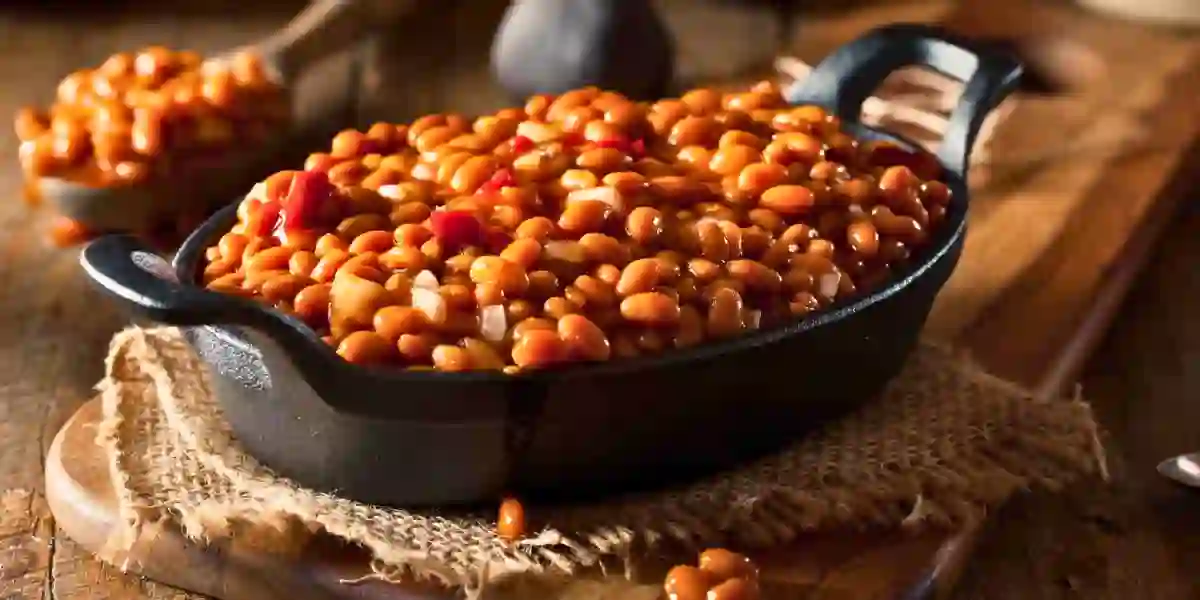
Beans are a nutritious and versatile food. Knowing how long are cooked beans good for in the refrigerator is crucial. It helps to avoid spoilage and food poisoning.
In this article, we will explore the optimal shelf life of cooked beans, tips for proper storage, and signs of spoilage. We also reveal strategies to extend their freshness.
Let’s dive into the world of cooked beans and discover how to make the most of this delightful ingredient.
How Long Are Cooked Beans Good for in the Refrigerator
Cooked beans can be stored in the refrigerator for 3 to 5 days. To maximize their freshness and shelf life, store them in an airtight container and keep them at a temperature below 40°F (4°C). For longer storage, consider freezing them, which can extend their shelf life up to 8 months.
How Long Cooked Beans Can Stay Safe
When it comes to cooked beans’ shelf life, various factors come into play. From bean type to storage conditions, understanding these variables will help you preserve their quality for longer periods.
Cool Beans Completely
After cooking your beans, let them cool down entirely before storing them. This prevents condensation from forming in the container. That can create a breeding ground for harmful bacteria.
Airtight Storage
Transfer the cooled beans into an airtight container or a resealable plastic bag. This tight seal keeps air and moisture out. It maintains the beans’ quality and safety.
Label with Cooking Date
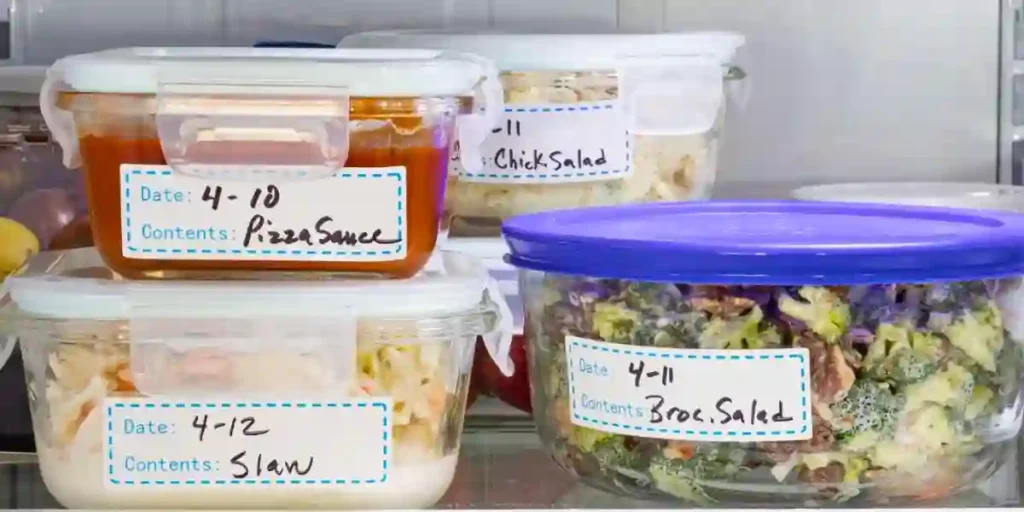
Always label the container with the date you cooked the beans. This way, you can keep track of how long they’ve been stored. It also reminds us when it’s time to consume them.
Ideal Refrigeration Temperature
Ensure your refrigerator maintains a temperature of 40°F (4°C) or below. This cool environment slows down bacterial growth. That extends the shelf life of your cooked beans.
Avoid Overcrowding
Don’t cram your refrigerator with too many items, including cooked beans. Adequate spacing allows for proper airflow. This helps the beans stay at the desired temperature.
Regular Inspection
Regularly check your cooked beans for any signs of spoilage. A sour or off-putting odor, slimy texture, discoloration, or mold growth indicates that the beans have gone bad.
Safe Reheating
When reheating cooked beans, ensure they reach an internal temperature of 165°F. It eliminates any harmful bacteria.
Avoid prolonged exposure to temperatures between 40°F to 140°F. This is the “danger zone” where bacteria multiply rapidly.
Prevent Cross-Contamination
To avoid cross-contamination, store cooked beans away from raw meats, or seafood in the refrigerator. Separate containers or securely wrapped packages keep them safe from potential contact.
Freezing for Long-Term Storage
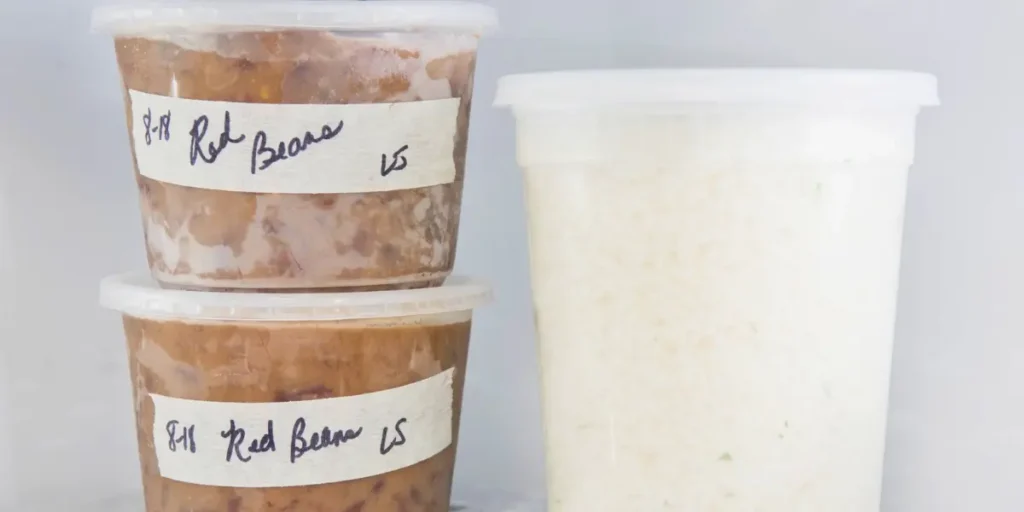
If you can’t finish your cooked beans within the recommended timeframe, freezing is an excellent option. Divide them into meal-sized portions. Then store in airtight freezer-safe containers or bags.
Mind the Thawing Process
When you’re ready to use frozen cooked beans, thaw them in the refrigerator overnight. Avoid defrosting at room temperature.
It will prevent bacterial growth. For a quicker thaw, use the microwave on low power for even heating.
Freezing Duration
For the best quality, aim to consume your frozen cooked beans within six months. While they might remain safe to eat beyond this period. But their taste and texture could suffer.
Embrace these practices to enjoy fresh and delicious beans for a longer period.
Refrigeration guidelines for cooked beans
It is crucial to refrigerate cooked beans promptly to maintain their freshness. Once properly stored, cooked beans can last up to 5 days.
Refrigerating them at temperatures below 40°f (4°c). It helps to inhibit bacterial growth and spoilage.
Signs of spoilage
To ensure the safety of your cooked beans, watch out for the following signs of spoilage:
- A sour or unpleasant smell
- A slimy or watery texture
- A change in color or appearance
- A mold or yeast growth on the surface
If any of these signs are observed, discard the beans immediately to avoid food poisoning.
Extending shelf life: strategies to prolong the freshness of cooked beans
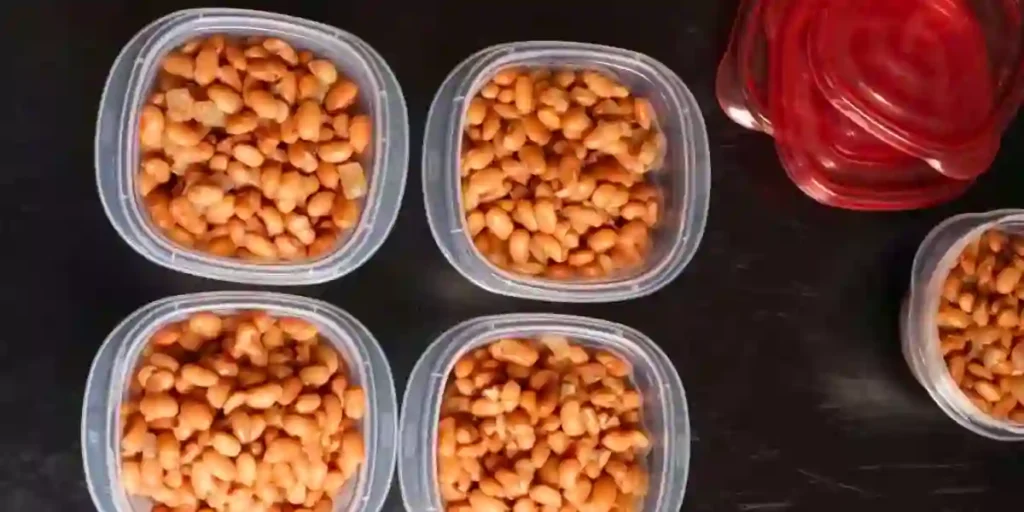
Cooked beans have a limited shelf life. But certain strategies can help to prolong their freshness. You can follow the below tricks.
- Proper storage: Sore cooked beans in airtight containers. It prevents air exposure, which can lead to spoilage.
- Temperature control: Set your refrigerator to a temperature below 40°f (4°c). It inhibits bacterial growth and extends shelf life.
- Refrigerate quickly: Cool cooked beans rapidly before refrigerating. It minimizes the time they spend at unsafe temperatures.
Exploring the option of freezing cooked beans
Freezing cooked beans is an effective method to extend their shelf life for up to 6 months. Follow these steps for proper freezing:
Flash freeze
Spread the cooked beans in a single layer on a baking sheet. Then place them in the freezer until they are firm.
Packaging
Transfer the flash-frozen beans to a freezer-safe container or bag. Remember to label them with the freezing date.
Thawing and Reheating
To use frozen beans, thaw them overnight in the refrigerator or on low power in the microwave. Reheat them on the stovetop or in the oven until they are hot.
Best Practices for Reheating Cooked Beans
Follow the below steps to reheat cooked beans safely.
Proper Storage of Cooked Beans
When it comes to reheating cooked beans, proper storage is the first crucial step. Ensure you refrigerate any leftover cooked beans promptly. Ideally within two hours of cooking.
To do this, transfer the beans into an airtight container or a resealable plastic bag. Remember to label the container with the date of cooking for easy tracking.
Choose the Right Reheating Method
There are several methods to reheat cooked beans. But not all are equal in terms of maintaining flavor and texture.
The best options are stovetop and oven reheating. Avoid using the microwave for long periods. It can lead to uneven heating and affect the beans’ taste.
Stovetop Reheating
To reheat on the stovetop, start by adding a splash of water. Or broth to the saucepan to prevent sticking or burning.
Place the beans in the pan and heat them over medium heat. You can stir occasionally. This method allows for even heating. It ensures your beans stay moist and flavorful.
Oven Reheating
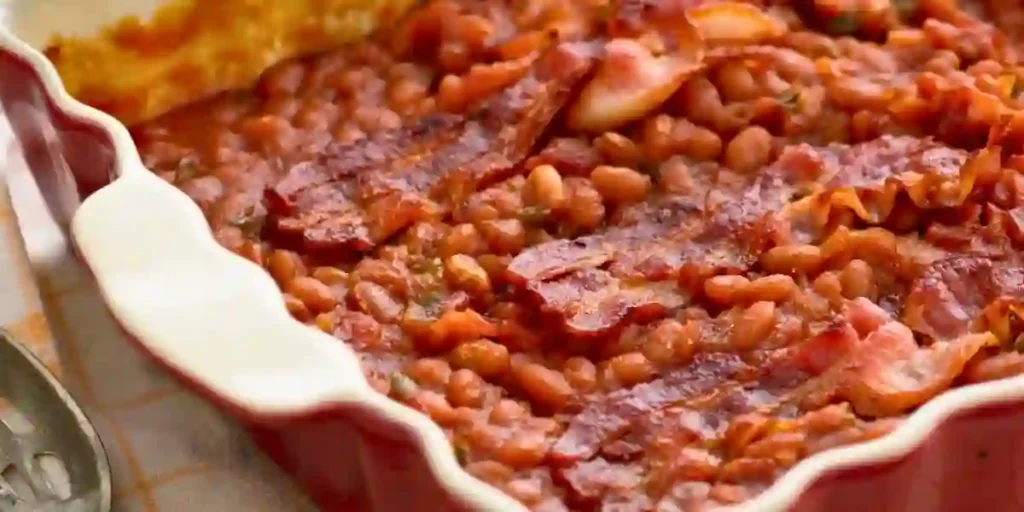
For oven reheating, preheat your oven to 350°F (175°C). Transfer the cooked beans to an oven-safe dish. Then cover it with foil or a lid to trap moisture.
Heat the beans until they are thoroughly heated. Typically around 20 minutes, depending on the portion size.
Avoid Overheating
One common mistake when reheating cooked beans is overheating them. It can lead to a dry, unappetizing texture.
Keep an eye on the beans during the reheating process. Remove them from heat as soon as they are hot throughout. Overheating can also lead to a loss of nutrients and flavor.
Check the Internal Temperature
To ensure the safety of reheated beans, check the internal temperature with a food thermometer.
The beans should reach a minimum temperature of 165°F (74°C) to kill any potential bacteria. It also prevents foodborne illnesses.
Add Moisture and Flavor
To enhance the taste and texture of reheated beans, consider adding a splash of broth or water to the Pan.
You can also mix in some fresh herbs, spices, or a drizzle of olive oil. It revitalizes the flavors.
Stir Frequently
When reheating beans on the stovetop, stir them frequently. It helps to distribute the heat evenly.
That prevents sticking. Stirring also helps maintain a consistent texture throughout the dish.
Reheat in Small Batches
If you have a large quantity of cooked beans, it’s better to reheat them in smaller batches.
This allows for better heat distribution. It also ensures all portions are evenly heated.
Serve and Enjoy
Once your cooked beans are thoroughly reheated, serve them immediately. Remember that reheated beans are best enjoyed fresh. So try to consume them soon after reheating.
Following these best practices enjoy a safe, flavorful, and satisfying meal. It will help you to achieve the best results every time.
FAQs
Is it safe to eat cooked beans after 5 days in the refrigerator?
No, it’s best to discard cooked beans after 5 days to avoid potential spoilage and food poisoning.
Can I freeze cooked beans for longer storage?
Yes, freezing cooked beans can extend their shelf life up to 6 months.
Does refrigeration temperature affect the shelf life of cooked beans?
Yes, maintaining a refrigerator temperature below 40°F helps prolong the freshness of cooked beans.
Do different types of beans have varying shelf lives in the refrigerator?
Yes, the shelf life of cooked beans can vary depending on the bean type.
Are there any health risks associated with consuming spoiled cooked beans?
Yes, eating spoiled beans can lead to food poisoning and cause various gastrointestinal symptoms.
Conclusion
Now you know, How long are cooked beans good for in the refrigerator. It helps you to ensure safety and flavor. By following the guidelines mentioned in this article, you can confidently enjoy your cooked beans.
It will maximize their shelf life and nutritional benefits. Remember to refrigerate or freeze cooked beans promptly. Adhere to safe reheating practices, and discard any beans showing signs of spoilage.
With these tips, you can stay healthy and satisfied. From now on, no more spoilage of cooked beans.
